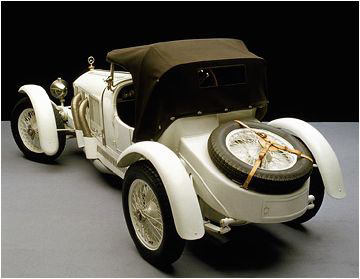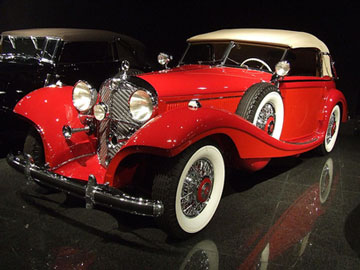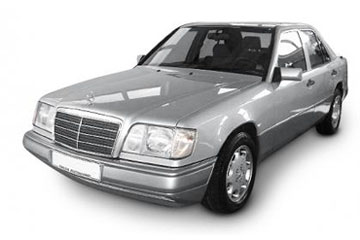A Brief but Thorough History of the Kompressor Engine

by Teddy Field
When the 1998 Mercedes SLK was launched, most people assumed the Kompressor badge referred to the name of the car. It was small (compressed), and since the Germans usually spell everything with a K, the name Mercedes Kompressor made sense to a lot of people. But they couldn’t have been more wrong. Kompressor is actually the German word for Supercharger. So any model wearing that badge…has a supercharger. It has nothing to do with the size of the car.
In case you didn’t know, a supercharger is like a big fan which forces
cool air directly into the engine. This allows a small engine to produce
the same horsepower as a much bigger engine, but without the added
weight or fuel consumption of the larger engine.
Mercedes Benz was the first car company to use a supercharger on a
production car. The 1923 Mercedes 10/40/65 featured a 2.6 liter 4-cyl
with a crank-driven supercharger. When the driver floored the Go-pedal, a
clutch would engage the supercharger, boosting power from 40-hp to
65-hp.

This was exciting technology at the time, and Mercedes soon expanded its
line of supercharged cars. However, they didn’t start using the
Kompressor designation until the 1934 Mercedes 500K. Up to this point,
the ‘K’ stood for Kurz, the German word for Short (as in wheelbase).
The most famous of the early “Kompressors” was the 1936-1939 Mercedes
540K. At the time, this curvaceous masterpiece was basically a supercar,
along the same lines as an Aston Martin DB9, or a Bentley Continental
would be today. It featured 4-wheel independent suspension,
hydraulic-assisted brakes, a 3 or 4-speed transmission with synchronized
gears, and of course; a 5.4-liter straight-8 with a Delaware-sized
supercharger.

They made just 406 540K chassis’, and a variety of bodies were fitted.
All 540K’s had massive chromed pipes running outside the hood, and they
made a terrific sounding 180-hp with the “kompressor” engaged.
While that might not sound like a lot of power, it was enough grunt to
propel these massive wood-framed 2-door’s to 60mph in 16 seconds, and on
to a top speed of 105 mph. However, those figures can vary, depending
on the size and weight of the body.
Mercedes continued to supercharge its top models until production
stopped for World War II (most of Hitler’s parade cars were
“Kompressors”). However, they wouldn’t revisit the art of supercharging
until 1992, when they released the supercharged 2.0 liter M111 in the
(W124) 1992 Mercedes 200E.

Ironically, the 1992 M111 was the first generation of the engine that
would eventually find its way into the 1998 MB SLK “Kompressor”. And
while the modern Mercedes “Kompressor” might lack the chrome-dripping
elegance of the original, it does prove that Mercedes still knows how to
make a proper sports car…with a blower.
